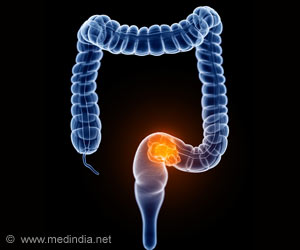Robotic arm built using a manufacturing paradigm based on pop-up fabrication and soft lithography shows better performance and control during surgery.
Highlights
- Soft robots used for surgical applications can match the stiffness of the body and may not puncture or tear tissue. //
- But it limits the application of soft microsystems by integrating soft fluidic microactuators helps to have a better control over the force applied during surgery.
- Creating soft pop-up mechanisms increase the performance of the actuators to operate.
Soft robots are so promising for surgical applications because they can match the stiffness of the body, meaning they won't accidentally puncture or tear tissue. However, at small scales, soft materials cannot generate enough force to perform surgical tasks.
"At the millimeter scale, a soft device becomes so soft that it can't damage tissue but it also can't manipulate the tissue in any meaningful way," said Tommaso Ranzani, a postdoctoral fellow at SEAS and the Wyss Institute and coauthor of the paper.
"That limits the application of soft microsystems for performing therapy. The question is, how can we develop soft robots that are still able to generate the necessary forces without compromising safety."
Inspired by biology, the team developed a hybrid model that used a rigid skeleton surrounded by soft materials. The manufacturing method drew on previous work in origami-inspired, pop-up fabrication, developed by Robert Wood, the Charles River Professor of Engineering and Applied Sciences.
"We found that by integrating soft fluidic microactuators into the rigid pop-up structures, we could create soft pop-up mechanisms that increased the performance of the actuators in terms of the force output and the predictability and controllability of the motion," said Sheila Russo, postdoctoral fellow at SEAS and Wyss and lead author of the paper.
The soft actuators are powered by water. They are connected to the rigid components with an irreversible chemical bond, without the need of any adhesive. The team demonstrated the integration of simple capacitive sensing that can be used to measure forces applied to the tissue and to give the surgeon a sense of where the arm is and how it's moving.
The fabrication method allows for bulk manufacturing, which is important for medical devices, and allows for increased levels of complexity for more sensing or actuation. Furthermore, all materials used are biocompatible.
The arm is also equipped with a suction cup inspired by octopus tentacles to safely interact with tissue. The team tested the device ex vivo, simulating a complicated endoscopic procedure on pig tissue. The arm successfully manipulated the tissue safely.
"The ability to seamlessly integrate gentle yet effective actuation into millimeter-scale deployable mechanisms fits naturally with a host of surgical procedures," said Wood. "We are focused on some of the more challenging endoscopic techniques where tool dexterity and sensor feedback are at a premium and can potentially make the difference between success and failure."
The researchers demonstrated that the device could be scaled down to 1 millimeter, which would allow it to be used in even tighter endoscopic procedures, such as in lungs or the brain. "Our technology paves the way to design and develop smaller, smarter, softer robots for biomedical applications," said Russo.
Reference
- Sheila Russo et al., An Additive Millimeter-Scale Fabrication Method for Soft Biocompatible Actuators and Sensors, Advanced Materials Technologies http://dx.doi.org/10.1002/admt.201700135.
Source-Medindia











